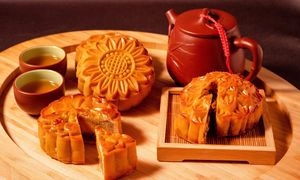
English vocabulary and phrases on Mid-Autumn Festival
adornment means . Learn how to pronounce and use adornment through vivid examples and easy-to-understand exercises.
Okay, let's break down how to pronounce "adornment." It can be a tricky one! Here's a breakdown and a few tips:
The typical pronunciation is:
/ˌædərˈnəm/
Let's break that down syllable by syllable:
Putting it together, it sounds like: "uh-der-NUM" (stress the second syllable, "NUM")
Here's a more detailed breakdown with sounds:
Tips:
Would you like me to:
Let's break down how to use the word "adornment" in English. It's a lovely, slightly formal word that describes something that adds beauty or decoration. Here's a detailed explanation:
Referring to Jewelry & Accessories: This is the most common use.
Referring to Decoration (General): It can extend beyond jewelry.
Referring to Natural Features (Less Common, but Valid): Occasionally, you might use it for natural beauty.
Figurative/Abstract Use (Rare): Sometimes it can be used metaphorically to describe something that adds richness or value to an experience.
Formal Tone: “Adornment” is a more formal word than “decoration” or “embellishment.” It’s suitable for writing and more elevated speech. In casual conversation, “decoration” is often preferred.
Emphasis on Beauty/Appearance: It focuses on the effect of the item – how it makes something look.
Noun: It’s always a noun (a thing).
Incorrect: “The necklace was adorned.” (Needs a subject – what was adorned?)
Correct: “The queen’s gown was adorned with a magnificent ruby necklace.”
Incorrect: “She decorated the room.”
Correct: “She adorned the room with paintings and antique furniture.”
Resources for Further Learning:
Do you want me to:
Which of the following items typically serves primarily as an _______ rather than a purely functional object? A) a tiara B) a hammer C) a diamond ring D) prescription glasses E) a decorative brooch
The architect suggested adding ornate details as an _______ to the building's facade, significantly enhancing its visual appeal. A) enhancement B) embellishment C) structure D) fixture
The museum exhibit featured ancient artifacts, many of which displayed intricate _______ reflecting the era's artistic sensibilities and cultural values. A) utility B) embellishments C) decorations D) functions
The interior designer chose minimal _______ for the modern office space to maintain a sleek and uncluttered aesthetic. A) furnishings B) ornamentation C) decoration D) clutter
The company's new logo incorporates traditional cultural symbols as artistic _______ to convey its heritage and brand identity. A) motifs B) additions C) encryptions D) distractions
She wore only a simple silver chain around her neck. Rewrite:
The ancient manuscript was beautifully decorated with intricate gold leaf. Rewrite:
The chef added a final touch of parsley to garnish the dish. Rewrite:

English vocabulary and phrases on Mid-Autumn Festival

Tips to improve vocabulary in communication

English vocabulary by topic: Clothes

The secret to remembering all 50 English vocabulary words every day easily

English vocabulary by topic: Human body

Vocabulary of the most popular subjects in English

Learn English about Covid: All about vocabulary and disease prevention

Vocabulary of Subjects in English

Set of 60 English vocabulary on educational topics

Vocabulary - just a small thing!
Comment ()